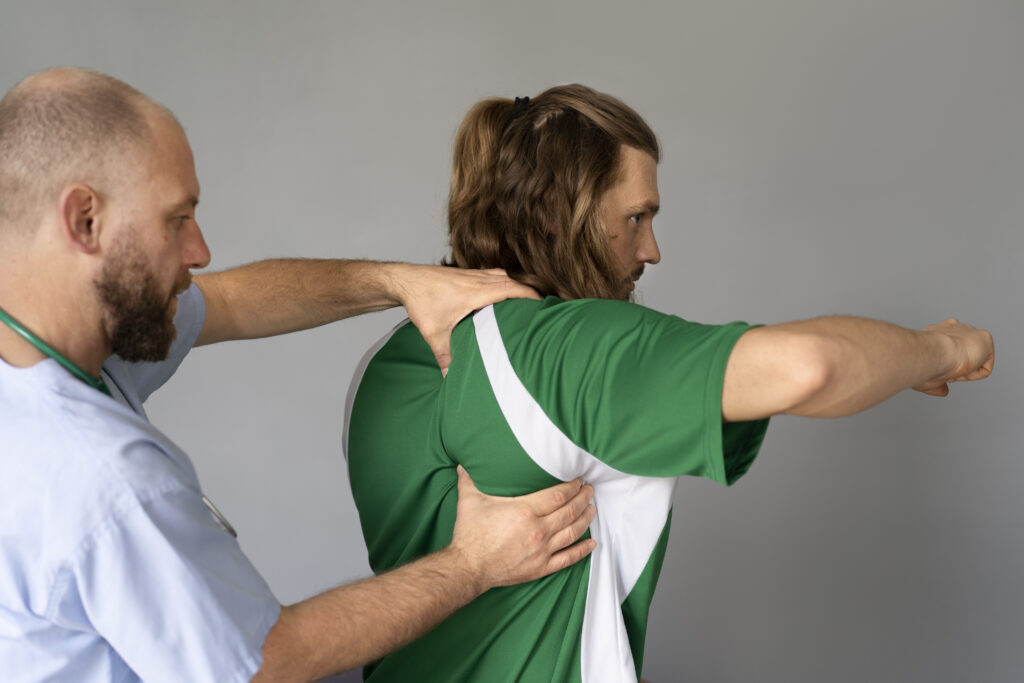Posture Deformities

Posture deformities refer to misalignments or deviations from the normal, healthy posture. These can result from various factors including genetic predisposition, poor habits, injury, or medical conditions. Common types of posture deformities include:
Common Types of Posture Deformities
1.Kyphosis:
- Description: An excessive outward curvature of the thoracic spine, leading to a hunched back.
2. Lordosis:
- Description: An excessive inward curvature of the lumbar spine, also known as swayback.
3. Scoliosis:
- Description: A lateral curvature of the spine, often taking the shape of an ‘S’ or ‘C’.
4.Forward Head Posture:
- Description: The head juts forward from the alignment of the spine.
Causes of Posture Deformities
- Genetic Factors
- Poor Postural Habits:Injury and Trauma
- Medical Conditions
- Lifestyle Factors
Treatment program:
- Faradic stimulation to improve power of weak muscles
- TENS application for pain relief (phantom pain) by causing a mild electrical stimulation to the neural system that enhances production of beta endorphin and encephalin (pain killer).
- Ultrasound for pain relief (phantom pain) by increase extensibility of muscles, allow micro message effect, vasodilatation of the blood vessels and Increasing number of white blood cells that invade the microorganisms
- Laser therapy for pain relief through accelerate the inflammatory phase of the healing process, stimulating B endorphin secretion which is associated with inhibiting synthesis of prostaglandin, decreased the conduction velocity of the sensory nerve and stimulates the gate control to inhibit pain pathway
- Strengthening exercise to improve power of weak muscles
- Stretching exercise to improve flexibility of shorted muscles
- Proprioceptive exercise to regain joint receptor sensitivity.
- Electromagnetic field to decrease pain and inflammation
- Hot / cold application prior to stretching exercise
- Myofascial release to decrease muscle spasm and improve body fascia
- Mobilization/ manipulation techniques to improve R.O.M of joints and decrease pain.
- Kinesio Tapping to improve circulation, decrease muscle spasm and support joints
At Dar EL-MONA Creating an individualized plan of treatment for neurorehabilitation begins with a comprehensive assessment, which informs the development of a tailored individualized intervention strategy.
Each patient’s treatment plan is tailored to their specific needs, considering the severity of their condition, overall health, and rehabilitation goals. Continuous assessment and adjustment of the manual therapy techniques ensure optimal outcomes.
